Bats!
Tuesday and Wednesday of last week were exceptionally warm days with mild nights. It was apparently warm enough to awaken some of the local bats.
I wasn’t at the Museum to witness bats actually flying over the campus on either of those nights but Ranger Rock spotted one floating in the Sail Boat Pond on Thursday morning. The bat, unfortunately, was not alive.
How had this bat ended up in the water? I can’t say for sure but I do have a theory. As stated, Tuesday and Wednesday were warm days with fair nights. Our unfortunate bat had probably been cruising through and over the campus hunting insects on balmy Wednesday night. Storms with very heavy rain came through that night. The leading edge of the system was sharp-edged with a dense band of rain followed by a sudden drop in temp. When the rain came down it came down suddenly and with force. The bat may have been caught out in the open when the weather came through.
The following photos were taken soon after the bat was removed from the water. The fur is wet and appears much darker than it would if it were dry.
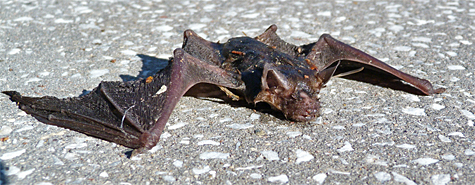
I don’t know the identification of this bat but maybe someone out there can help ID it. My thoughts are either Big Brown Bat or Southeastern Myotis.
Here are some closer images that may help:
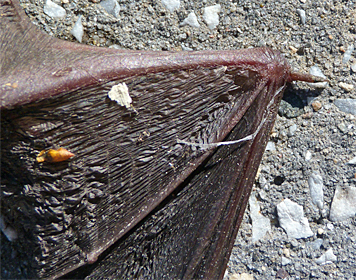
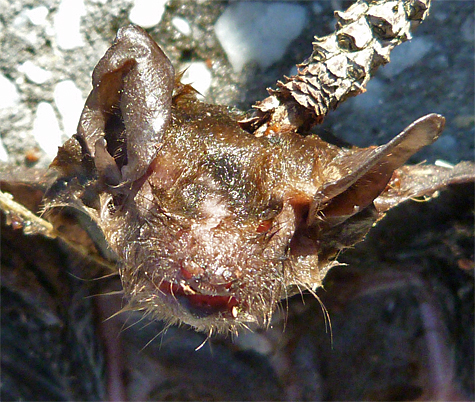
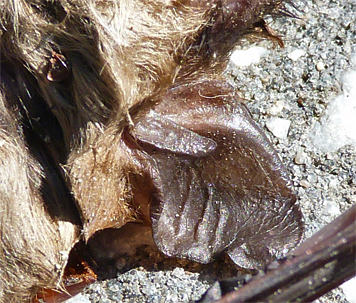
The shape of the tragus can help eliminate some bats from the mix. In some bats the tragus is pointed, others rounded, with various shapes in between and beyond those two simple shapes.
Admitedly, there are other features which are important in IDing specific bats, but hopefully the characteristics shown will be helpful. By the way, the fur when dry was medium brown above and lighter on the belly.
Any ideas out there?
———————
One last photo
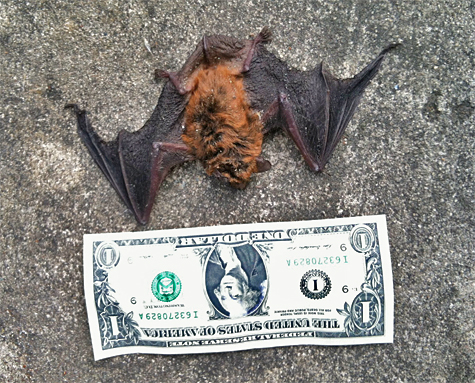
I passed this off to a bat expert I know at the FWS.
She needs an idea of the size of the bat to make a better ID. Did you take any photos with a ruler, pen or anything for scale?
Well, we received a bat identification from the photos on the left from Christina Kocer (through Animal Keeper Sarah Van de Berg). Christina works with eastern bats for the USFWS and says that the bat looks to be a Big Brown Bat (Eptesicus fuscus).
Christina’s work with bats is highlighted here on the Museum’s Animal Department blog: /keepers/2012/08/15/meet-a-biologist-christina-kocer/
Thanks, Sarah and Christina!
Incidentally, I posted an additional photo of the bat next to a dollar bill after the mammal dried out. Scroll down to bottom of page.
Nancy or Shawntel will have contact info for Rob Miles, the ED for the Organization for Bat Conservation. I bet you could send him the photos and he would help. He’s done numerous programs at the Museum.